Lesson 1: A History of Symbolism
Symbols
have been around since the human race first needed to communicate with
others beyond the spoken language. The symbols drawn on cave walls told
stories of daily life, gave instructions regarding how certain actions
were done so as to be consistently successful, such as hunting, sowing
and planting.
If
one clan migrated from the cave and another clan moved in, they then
had “instructions” on where certain geographic areas were, such as water
sources, other caves, food sources, etc., and how the previous clan
hunted and gathered. The pictures became records of those who’d lived
there. They were the first “written” language - all in symbols.
Over
the centuries, as clans migrated, certain symbols became uniform, or
with obvious similarities, from one area to another. Wavy lines for
water, chevron forms for mountains, rayed circle for the sun, etc.. As
time moved forward so the symbols progressed from simple line drawings
of stick figures to more complex designs that incorporated several
symbols that were used as religious symbols, family crests, nations’
flags, secret society seals, etc..
Written
language evolved from symbols. In some, a symbol represented a whole
word or concept. In others, a symbol represented a single letter, which
when in combination with others formed entire words or concepts. Quite
often those concepts were religious in nature.
The symbols of the Kabbalah are one example of this. Johannes Reuchlin (1455-1522) wrote, in Christian Mysticism that
“The Kabbalah is nothing else than symbolic theology, in which not only
are letters and words symbols of things, but things are symbols of
other things.”
This concept can be shown in the following diagram:
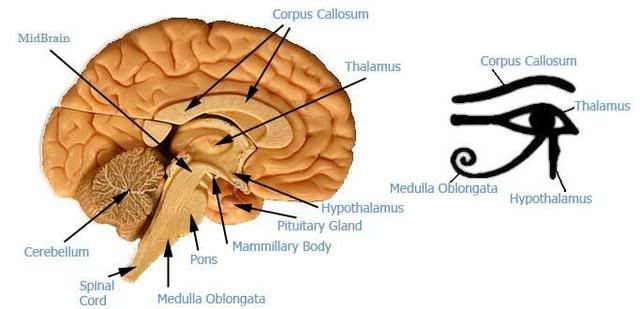
Image 1: Comparative view of the thalamus, inside the brain, with the Eye of Horus
The
ancient Egyptian symbol, the Eye of Horus (or Ra) is the exact
formation of the human thalamus! Some say “coincidence”, but Egyptians
are known for their exploration of the human body. Their embalming
techniques required the removal of all parts, so they would’ve seen this
part of the brain, and over time and experimentation, figured out that
it is the “processor” for our senses of taste, smell, sight and hearing.
From this we can progress to the concept that language is, in essence,
driven by our senses. That which we can perceive, we can describe, and
that which can be described can be brought into the reality of others.
That is the power of symbols.
Another
example of symbolism is that of snakes and their association with the
concept of “knowledge”. The Caduceus (pronounced ka-DOO-SEE-uss) comes
in many variations. Here are a few:
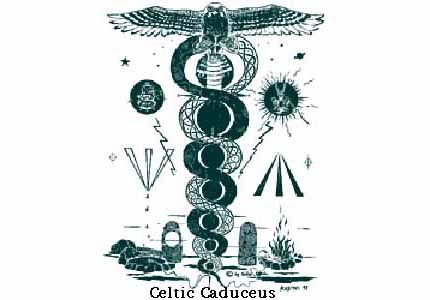
Image 2: Celtic Caduceus

Image 3: Caduceus with DNA Helix

Image 4: Caducei (a) Wand of Hermes; (b) Leafless Aaron's rod
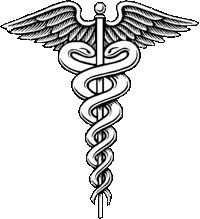
Image 5: Standard Caduceus
The
Caduceus is usually a winged rod or staff, which represents magick, and
is entwined by two serpents. It actually represents death. Compare this
with the Rod of Asclepius, which was named for the Greek God of
Healing. It is a Cypress rod, which represents strength and authority,
entwined by one serpent who represents re-birth and fertility. Each of
these are recognizable as symbols of the American medical community, but
only the Rod of Asclepius conveys the intended message.
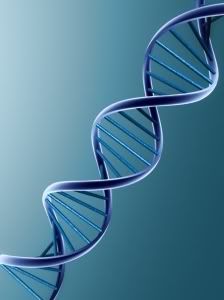
Image 6: DNA
The
Caduceus’ symbolism can be interpreted another way. Those snakes of
“knowledge” look very much like scientists’ representations of DNA
strands, don’t they? DNA wrapped around the Tree of Life makes a
profound statement. DNA is certainly the key of knowledge because it
holds the code to all life.
Originally,
the correct symbol for the field of medicine was the Rod of Asclepius
but it was mistakenly replaced with the Caduceus here in the U.S.
during the mid-19th Century by the military and used in the military
hospitals. This is thought to be due to that symbol’s ancient
association with alchemy. Many ancient alchemists were members of the
medical community. Today, the Caduceus is finally, and correctly, being
replaced by the Rod of Asclepius.

Image 7: Rod of Asclepius
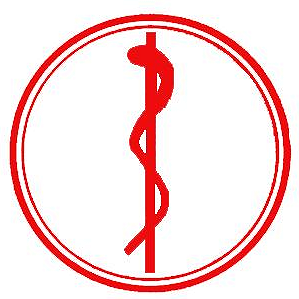
Image 8: Rod of Asclepius with Circle of Life

Image 9: Star of Life - The Paramedic’s Symbol
Other
examples of the evolution of symbols are the palle. These are the 3
gold balls which are still used on many pawn shop signs. This symbol
dates back to the Medici (pronounced MEH-deh-chee) family, who were very
wealthy and powerful merchants and bankers in Florence, Italy during
the 15th Century. The Medici crest of arms consisted of a series of red
spheres. Each generation of the family had its own indicative number of
spheres on their crest. As the family’s wealth and power increased,
other businesses designed variations of the Medici coat of arms with the
intention of attracting customers with their misleading versions of the
Medici’s trusted and recognizable symbol. The color of the balls was
eventually changed to gold to represent monetary success. In time, the 3
gold balls became synonymous with pawnbrokers. As with most
centuries-old tales, there are variations to this story, but this is the
basis for all of them.
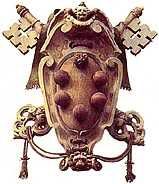
Image 10: Medici Coat of Arms
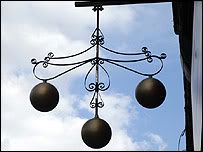

Image 11: Elaborate Pawn Broker’s Sign
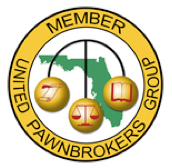

Image 12: United Pawnbrokers Group logo
Seals:
Seals,
like symbols, have been used for centuries. Royalty, political leaders,
and rulers have always had some sort of stamp with their official seal
on it. Rings were a favorite because they were an immediate identifier
of the bearer. Similar to our driver’s license today being used as our
form of identification.
Letters
and documents were sealed with melted wax and a stamped insignia was
applied to the wax to seal it from prying eyes. If the seal was found
broken upon delivery, then it was obvious that someone had read the
document. A broken seal was a big no-no! And in some situations was
cause for immediate death to the messenger. Sucks to be them!
Ancient
family crests with sacred symbols of particular meaning to the bearer
were inscribed on armor, jewelry, bowls and plates, etc.. They were also
carved in stone walls or wood doors.
Today,
our equivalents would be the Seal of the President of the United States
(or the seal of other nations‘ leaders), national or state flags, the
Eagle on our money, the star on a policeman’s badge, a company’s logo,
etc. Each of these types of seals have power. How much power, though, is
determined by the energy behind them.
For
example, on a global scale, the President’s Seal holds far more power
than a company logo. But on a personal level, the company owner feels
great pride, and so power, when seeing their logo in a newspaper ad, or
on a billboard, or maybe even on TV. Each is relative to our own
experience.
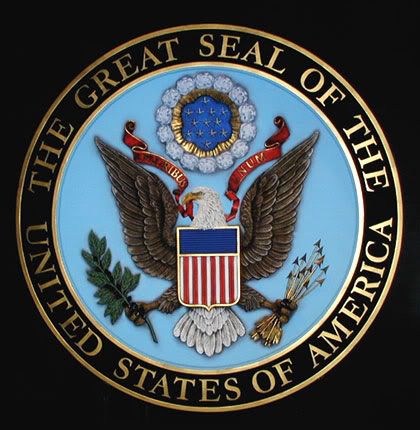
Image 13: The Great Seal of the United States of America
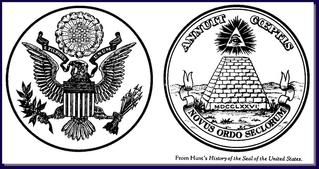
Image 14: Seal of the United States of America and the Pyramid on the back of the dollar bill.
On
our dollar bill are many symbols from antiquity that have very deep
spiritual and mystical meanings. The following is taken directly from
the New Thought site: http://newthought-apps.net/notes.html as I think their explanation is far better than I could do:
“…on
the reverse of the seal, there is the pyramid. The pyramid's use as a
tomb for the Egyptian Pharaoh was a secondary use. Its principle use
(due to its dimensions and construction according to sacred laws) was as
a temple for the priests who were contemporary custodians of the most
ancient Spiritual Truths until the death of the Pharaoh. [van Auken,
1999]
On
the dollar bill's pyramid there are 12 layers of blocks (symbolic of
the 12 tribes of Israel, which number is mystically significant going
back beyond Pythagorean numerology. [Note: related to ancient Egyptian
astronomy (and perhaps even more ancient sources) which tracked the
annual route of the sun through the 12 astronomical "houses" of the
night sky, with their recognized systematic influences on human
activity.] The Roman numerals on the bottom row of the pyramid indicate
the founding year, 1776. [ref Hall, 1988, p LXII] The characteristics
of each of the 12 tribes is described in the occult dimensions of The
Qabbalah, the Mystical text of Jewish origin. [See also Fillmore: The Twelve Powers of Man, 1995 reprint, which is based upon this Mystical guidance]
At
the top of the Pyramid is a triangle, the shape of the Greek letter D
(Delta,) which represents the name of GOD. It symbolizes the all seeing
eye of GOD. This is not a reference to the primitive, vengeful,
anthropomorphic God of Christian fundamentalists and evangelicals, but
the transcendent universal GOD as worshipped by the original Gnostic
Christians whose manifestation is described in The Secret Doctrine of Theosophy [Re Blavatsky, 1888/1988]. The pyramid contains 72 blocks (six representatives from each of the 12 tribes of Israel):
"The
72 stones are the 72 arrangements of the Tetragrammaton, or the four
lettered name of God--the Divine part of nature completing the works of
men. These four letters can be combined into 72 combinations, resulting
in what is called the Shemhamforesh, which represents, in turn, the
laws, powers, and energies of Nature by which the perfection of man is
achieved. The Pyramid then is the Universal House, and above its
unfinished apex [symbolizing the imperfection of mankind as an
incomplete work] is the radiant emblem of the Great Architect of the
Universe." [Brackets added: Hall, 1944, 1972, p 179] Read the allegory
of "The House of Three Rooms" in this work.
On
the obverse of the Great Seal there is the "eagle" which some will
recognize as the disguised Mystical Phoenix (an actual Phoenix design
was submitted by William Barton in 1782.) The Phoenix is the most
ancient symbol for Spiritual victory and achievement, i.e., after the
death of the body, the liberated Soul is freed as the confining flesh
disintegrates by fire into dust, and rises to continue its Spiritual
destiny and reconstitute itself in a new body in accordance with the
sacred Principles of Karma. [Note: another version holds that the
Phoenix lives symbolically for 500 years, and at death, its body opens
to reveal a new Phoenix.]
There
are 13 (another mystical number described in Hall, 1988, [op cit., p
LXIX]) each of the leaves and olives on the olive branches held in the
right claw, symbolizing our preference and will to peace; 13 stars (for
the original colonies,) tail feathers (balance,) and arrows in the left
claw symbolizing our readiness and willingness for war if provoked.
There are sacred inscriptions in Latin: e.g., Noves Ordo Seclorum--" a
new cycle of the ages, E Pluribus Unum-- "out of many, one" (which does
not refer to the unit of money) and Annuit Coeptis-- "GOD smiles on
this" placed over the triangle with the single eye at the top of the
pyramid. This Delta symbol represents the sixth chakra or the focal
point of the intuitive mental plane that connects with the Spiritual
information-energy fields. Both of the latter inscriptions contain 13
letters in acknowledgment of the 13 colonies and the sacred number 13.
(Ref Hall, Manly P., p XC)
The
importance of this Mystical symbolism on our national seal, or on our
common currency, has nothing to do with these symbols themselves. They
only serve to remind the Spiritually endowed and stimulate the Spiritual
Consciousness that a Spiritually empowered observer brings to these
symbols that contains the Mystical power. Without this Spiritual
Consciousness, the symbols are meaningless, as can be found in
trivialized materialistic interpretations for these symbols.”
Very
interesting information isn’t it?! The individual symbols in each of
these seals can be found in countless places around the world dating
back many centuries. Each having similar or identical meanings. Our
Founding Fathers just put them all together in one place, bringing the
ancient energies of each into one cohesive power. Which, to some, would
add credence to why we have been such a world super-power for so long.
(The fact that these symbols are being “torn down” and/or ignored today
may be one a part of why we are losing that power - we, as a nation, no
longer believe in these symbols).
Sigils:
Sigils
are not quite as common as seals. However, they were also not for
“everyday” use. During the Medieval era their usage was at its height,
but there has begun a resurgence of interest in them in the past century
or two. More so in the last 50-60 years.
Sigils
were used in alchemy and mysticism when it was still non-heretical for
those in the Church to pursue such insights during the height of
Renaissance Europe. Note that it was only the Church and the elite who
were permitted to learn (and usually only men, not women). Knowledge was
kept from the peasants, in fact it was against the law for them to be
taught how to read or write. But once all types of spiritual or
scientific research was banned as “against God”, even to the clergy then
alchemy, science, and the medical arts all went underground and their
growth and progress were stifled almost to extinction.
But
these skills weren’t lost. Just hidden and kept secret. Symbols drawn
on trees or stones or in the earth were messages left for other
passers-by. Another method was when in a group the way to signal that
they had a certain type of knowledge was to draw a line of a known
symbol. If the other person was also trying to find someone of like mind
and knew the symbol, they would complete the design. Thus each would
know they could speak freely of certain forbidden subjects.
Sigils
are designs that are formed from the tracing of the letters of a
spirit’s name (more on this explanation in a later lesson) which have
been converted to numbers. This sigil is then used to summon the spirit
needed for the spellwork at hand. The sigil made from the spirit’s name
is believed to be the spirit’s true name. This gives the summoner (the
Witch) power over it long enough to make their request.
This
concept can apply to anything, not just calling spirits. By taking your
own name and turning it into a sigil you can use the power of your
name’s sigil, which is your true name, to empower yourself with whatever
you need: personal strength, calm, self-esteem, lose weight, etc. The
list is as endless as you make it!
Here
is my sigil: Viktorija, using the Square of Saturn (other planetary
squares can also be used, but this one is the most commonly used):
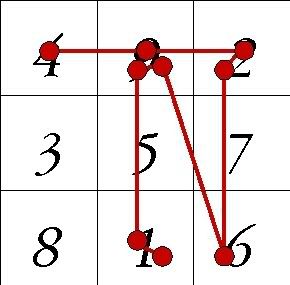
Image 15: “Viktorija” Sigil
Note
where there are consecutive repeats of a number (as in the 9, 2, and 1)
there is delineation of each, you don’t ignore it and don’t make a
line, each letter/number has a line. The dots are just for emphasis to
know exactly where one line stops and the next one starts.
There will be more in-depth information about how to do this in future lessons.
Bindrunes:
Bindrunes
are a combination of two or more runic symbols overlying one another.
They are configured so as to be aesthetically pleasing to the eye and
easy to remember when the bindrune is not visible or present. These are
usually made of metal or wood which has the symbol inscribed or painted
on it.
Historically,
the runes were written in a set order, just as our alphabet is (a,b,c,
etc.). The most widely known and used runic system today is the Elder
Futhark (although there are several others, any one of which could also
be used), the name of which comes from the first six rune symbols
(pronunciations are approximate as, in that time frame, 400-1000 CE,
they had sounds we don‘t use, and we have sounds they didn‘t have):
 = Fehu (FAY-hoo)
= Fehu (FAY-hoo)
 = Fehu (FAY-hoo)
= Fehu (FAY-hoo) = Uruz (OOO, rooz)
= Uruz (OOO, rooz)  = Thurisaz (THOOR-ee-sawz)
 = Thurisaz (THOOR-ee-sawz) A = Ansuz (AWN-sooz)
A = Ansuz (AWN-sooz) = Raidho (RYE-tho)
= Raidho (RYE-tho) = Kaunaz (KAY-nawz)
= Kaunaz (KAY-nawz)
More
frequently than not, when a Rune Stone relic, monument, or sword or
other item was found with Runic inscriptions, that item would have the
entire Rune alphabet symbols inscribed in order on it plus the owner‘s
name. If the item was too small for the whole set of symbols, such as a
piece of jewelry, then the first six symbols were the ones inscribed.
The
use of the Futhark alphabet (in whole or part) was used to invoke the
power of the Runes into that object and thus, to the one who owned it.
Swords and other armaments have been found with the full Futhark Runic
alphabet inscribed on them along with the bearer’s name, thus invoking
the power of the Runes into the weapon and on into the warrior wielding
it, giving him greater power - the power of the Gods.
Bindrunes
can also be designed from any magickal alphabet, not just the Futhark
Runes. There are talismans with Theban (or Witch’s) Alphabet. Egyptian
hieroglyphs are also favorites. The oldest written language, Cuneiform,
is an excellent one to use as well.
No
matter what magickal system of writing you use to make your talismans
and amulets, know that you are accessing ancient energies that contain
considerable power. These talismans and amulets you make and infuse with
these powers will greatly increase the efficacy of your spellwork and
rituals.
So, let’s get started!!
Copyright 2010, Granny Tackett

No comments:
Post a Comment